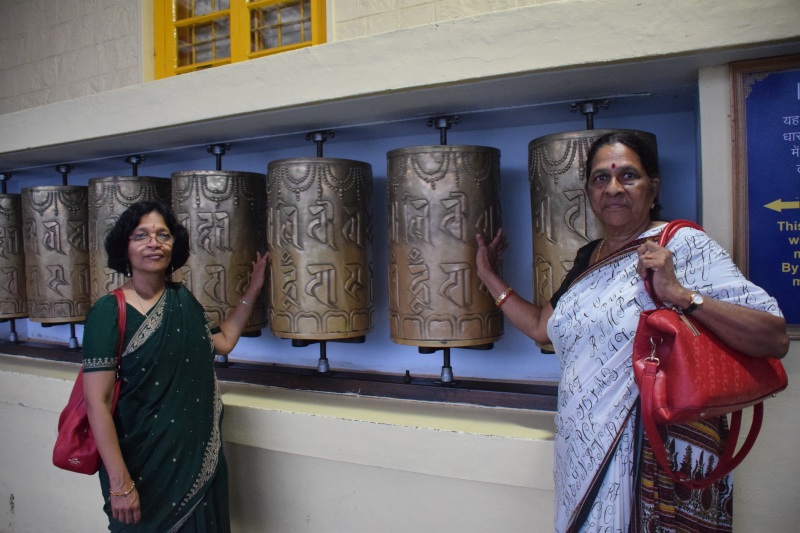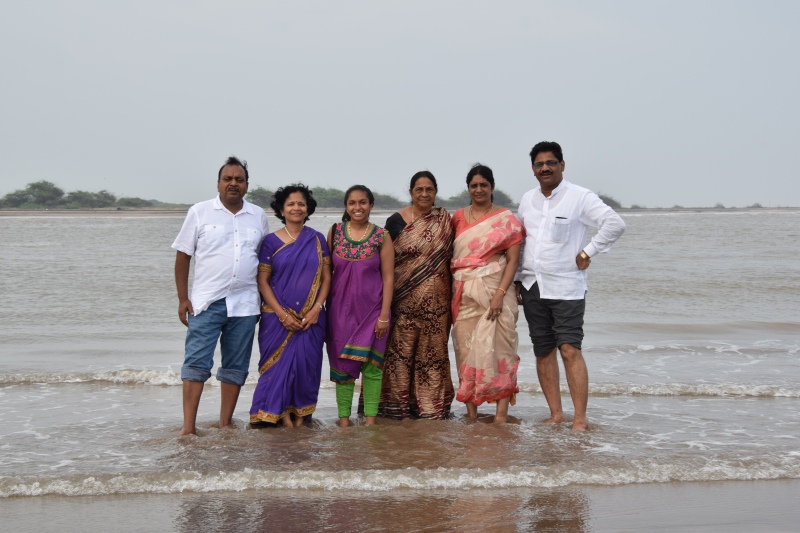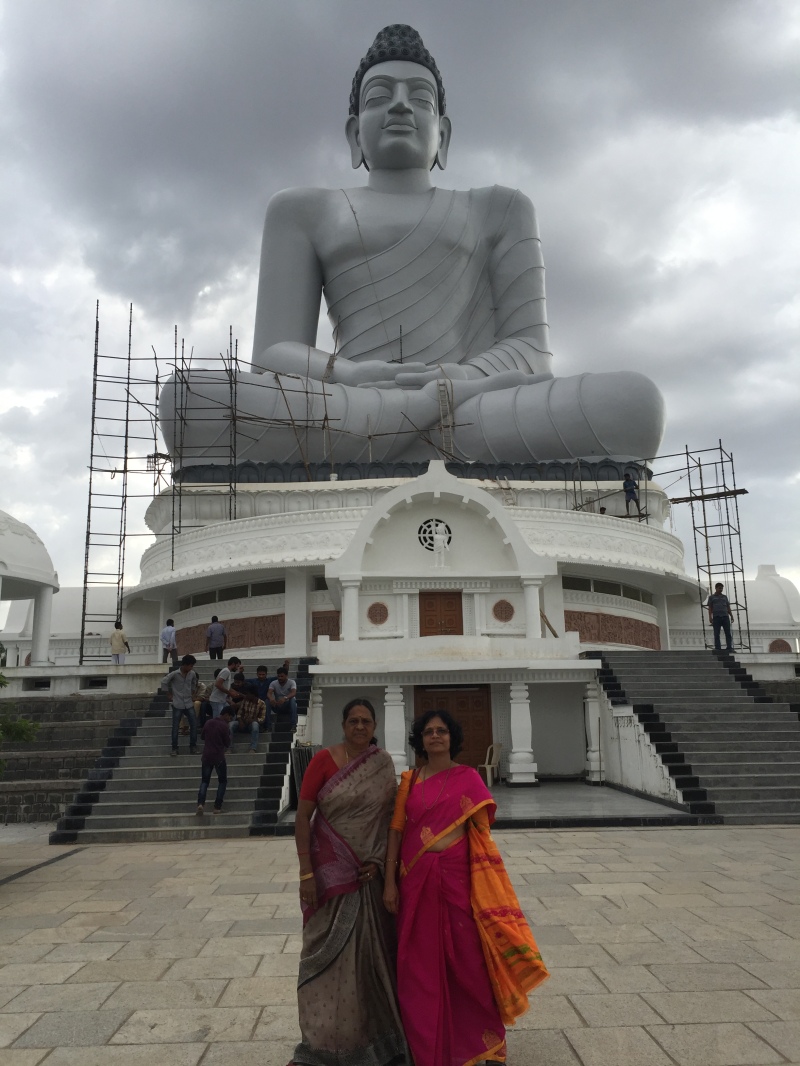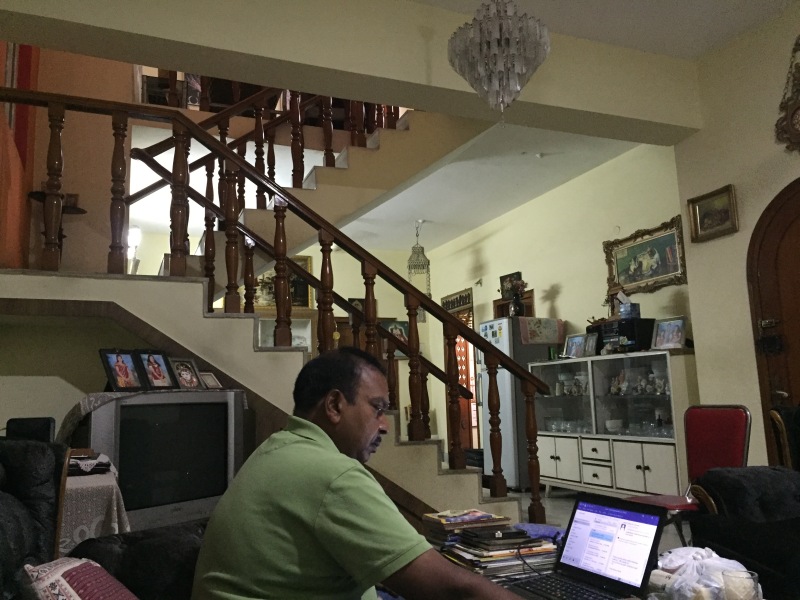
With the weather still as foggy as ever in Jammu, we embark the following morning on the seven hour journey to Dharmshala. Before we leave Jammu, our driver stops by a dry fruits and clothing shop, where, presumably, he’ll receive some type of small commission from the store if we end up purchasing a lot of stuff. And we do. We walk out with several Kashmiri silken sarees, silk shirts, some sweaters for dad, and a stole/scarf for me.
The journey may be long, but the road to Dharmshala does not disappoint. After some time, we pass from the state of Jammu into Punjab, where flat, green fields of lush crops await us. Punjab is known to be one of the areas of India with the most fertile agricultural land, and it’s a beauty to take in. The roads are also of superior quality compared to most places in India, perhaps due in part to relative economic progress of Punjab compared to much of the rest of the country. We stop at a roadside dhaba (hole-in the wall restaurant), and while the food is just alright, the lassi and homemade yogurt (known as dahi) is on point. Punjabi-made lassi is a frothy, sweet (or salty, if you choose) concoction that I cannot refuse.
Afterwards, we find ourselves quickly in the state of Himachal Pradesh, which was until a decade or so ago still part of the state of Punjab. Here, the landscape transforms from flat fields into a never-ending series of valleys, mountains and gorges, seemingly scattered from top to brim with dozens of varieties banana, eucalyptus, teak and other kinds of trees that I can’t even fathom. I thought the view in Jammu was breathtaking, but this is on another level. As we near closer to Dharamshala, I notice an almost alarming number of military cantonments and signs glorifying the strength of soldiers – presumably set up for the Dalai Llama’s protection from China. I get that the Dalai is one on of the top public enemies of the Chinese state, but still, the glorification of military culture and violence seems to contradict Buddhist teachings…
We wind up, and up, and UP the mountain until we finally make it to Dharamashala. Among the usual milieu of Indian tourists, I see plenty of Western tourists sporting massive backpacks and Buddhist devotees draped in red and gold robes here as well, some trekking up the mountain by foot instead of going by car. It’s madness in the immediate vicinity, among a chaos of cars, motorcycles, peoples and narrow alleyways, flanked on both side by merchants hawking their touristy souvenirs. There’s a small Hindu temple that we quickly visit, but the main attraction here is, of course, the Dalai Llama’s temple and home.
There’s a lovely open courtyard that looks onto a massive chair draped in gold, where the Dalai Llama presumably sits when he gives public appearances. The entire area is shrouded in fog and with remarkably few tourists in temple, peacefully conducive to meditative thought and prayer. As a human rights activist, being here takes on a double meaning for me when I consider all that the Dalai Llama has done to promote social justice and peace. We take some touristy photos at some Buddhist prayer wheels. On the wheels are enshrined sacred words of the Avolokesvitara, and if you turn the wheel once, it’s supposed to bring you merit and fortune equivalent to the words inscribed on the wheel.
We take off our shoes and enter the temple, wherein lies another more massive golden chair where again, the Dalai Llama likely sits during public prayer. On the sides of the temple are ancient Buddhist texts locked up in a shelf, as well as statues of the Buddhist avatar of compassion – a many-headed female looking deity – and of an Indian leader who helped to spread Buddhism. In the center of the temple lies the magnificent, golden Buddha statue, to which people offer their prayers, and next to which the Buddhist priests managing the temple place offerings of milk, oil and other food items. On the walls are also written various Buddhist teachings, such as the principle of dharma, which is somewhat of a complex subject, but boils down to the importance of doing ones duty and hard work and having merit in strong character, rather than conducting rituals and paying money. We pray and bask in the eminent aura of the temple. As we exit, I see a painting of Tibetan rulers on the wall of the temple and on the priest’s desk at the entrance area a small ‘Free Tibet’ sticker.
We walk across the courtyard to the Dalai Llama’s home, a yellowish compound with a green entrance overlooking the gate. It’s not open to the public now, and although we had little chance of seeing the Dalai Llama anyway, it seems we have no chance now. As the friendly Tibetan guards at the entrance tell us, the Dalai Llama went to bed at 5 pm today in preparation for an early departure to Ladakh tomorrow.
We purchase a few small tokens from some of the touristy shops, and while I briefly think the shopkeeper is ripping me off and that I should haggle, it’s quickly becoming darker, and we still have a twenty kilometer ride to our hotel on a narrow road. So I let it slide. Oh, how little did we know.

Our travel agent did not book the hotel in Dharmshala itself, but twenty kilometers away, and our driver doesn’t know where the hotel is located. In between intermittent GPS; the dark night; narrow, unfamiliar roads; signs leading to the hotel with misleading arrows; and asking random strangers for directions for more than an hour, we finally make our way to a rather unpaved road with no lights. There, we manage the most unpleasant, bumpy ride of our life for ten minutes – thanks to our driver’s skillful maneuvering – and at last, get to the hotel. We’re all tired and grumpy by the time we get there, least of all when we find out that there’s no Wifi. While we eat dinner, it’s evident that many parts of the hotel are in moderate states of disrepair. While the architecture of the hotel is beautiful (the owners are both architects), the rooms are spacious and cozy, and the mountaintop location is gorgeous, the experience of getting there still leaves something to be desired.
In the morning we get off to a late start, but rise in a better mood, spirits buoyed by the mesmerizing views of the green mountaintops enmeshed in fog. We set off for Chamunda, Jawalamukhi and Kangra (more on that in the next blog post).

































































